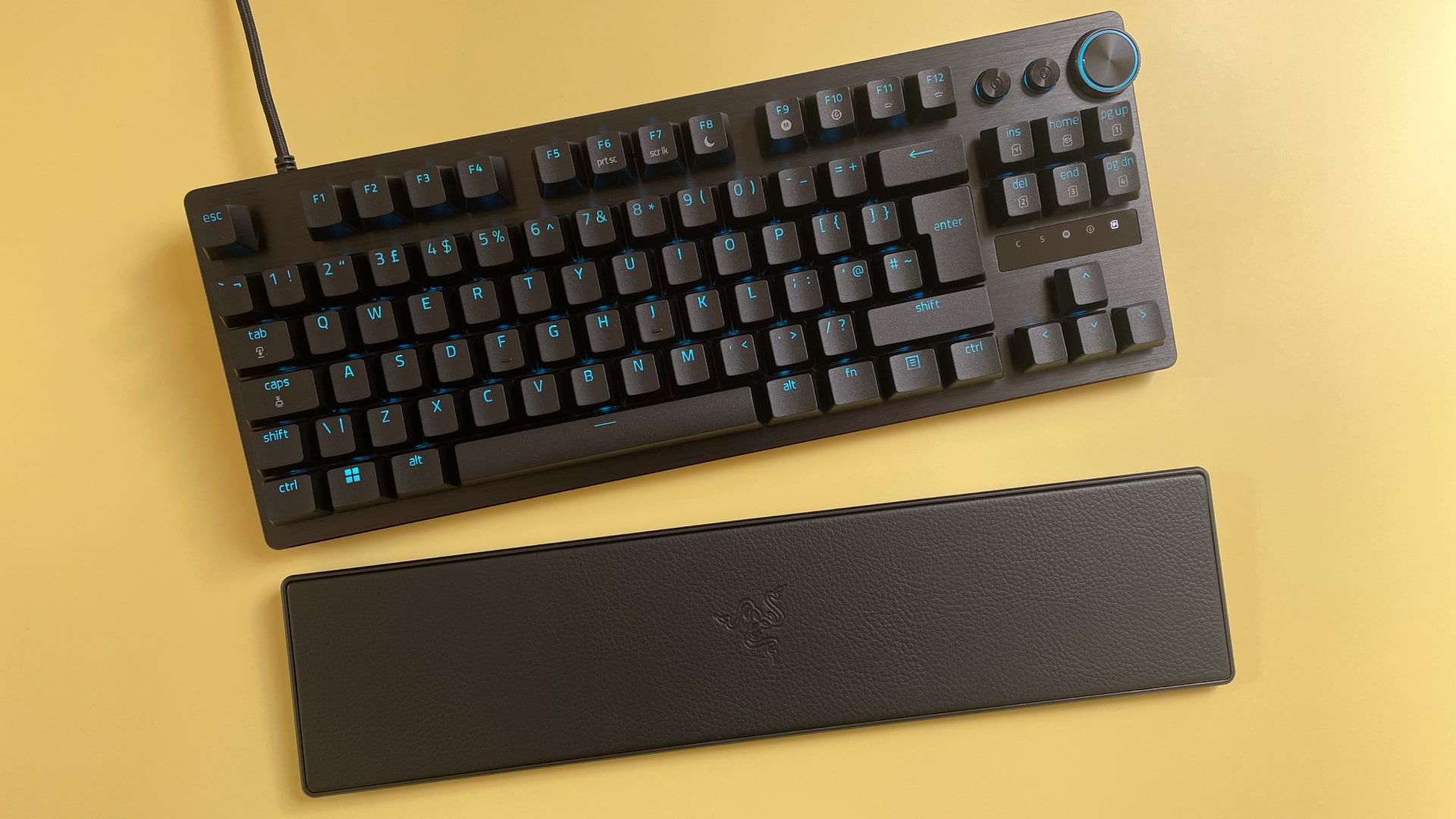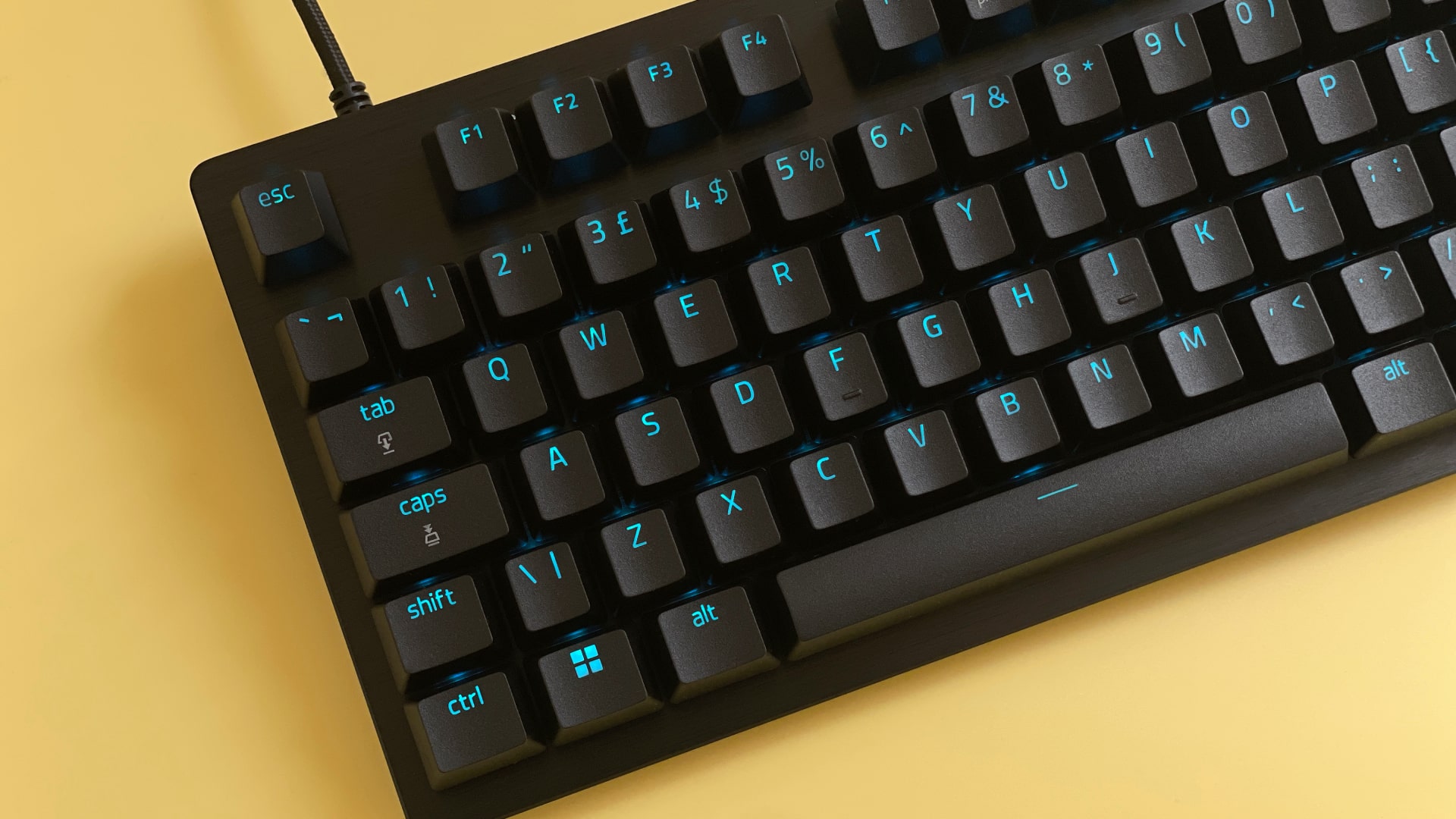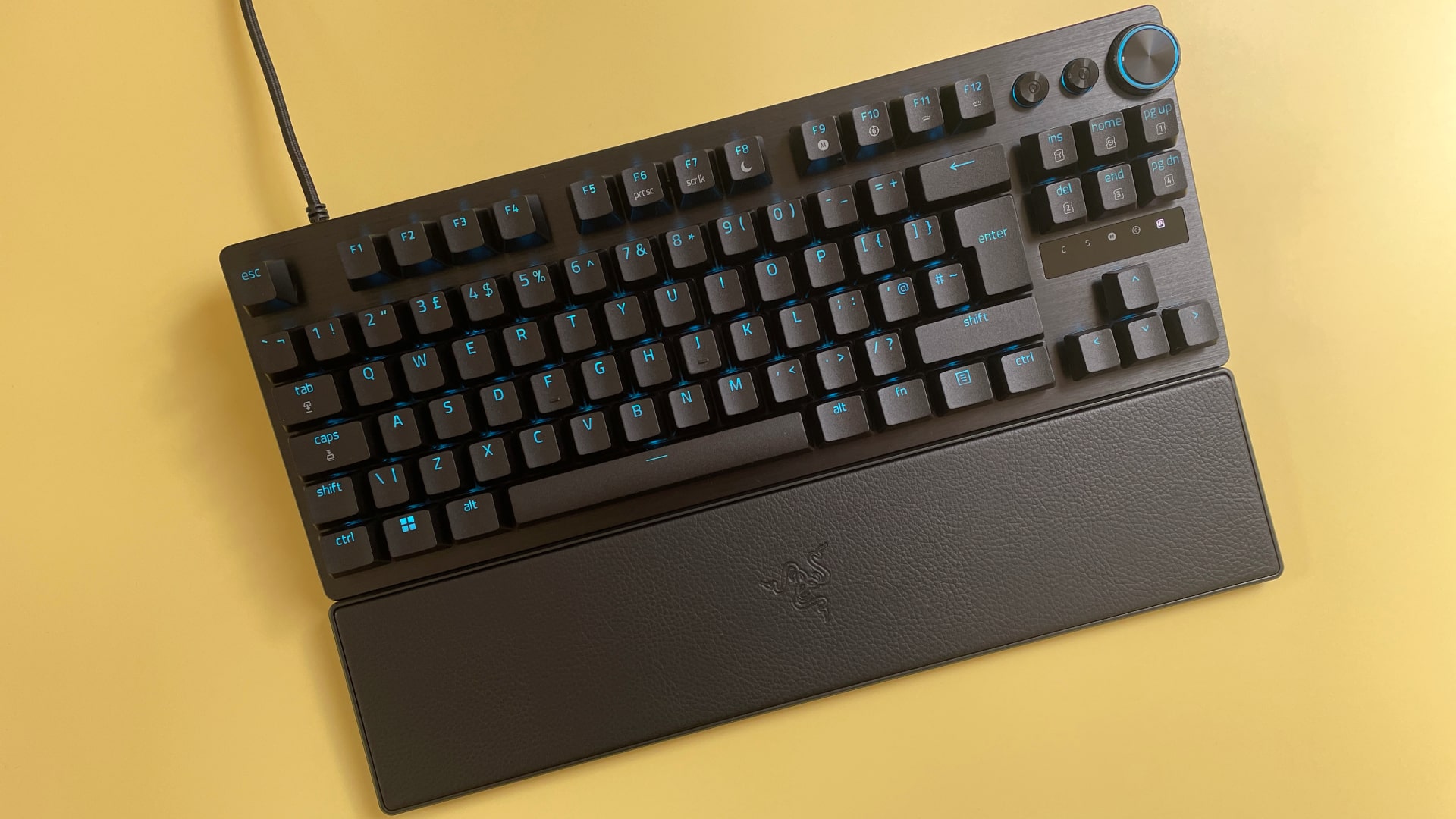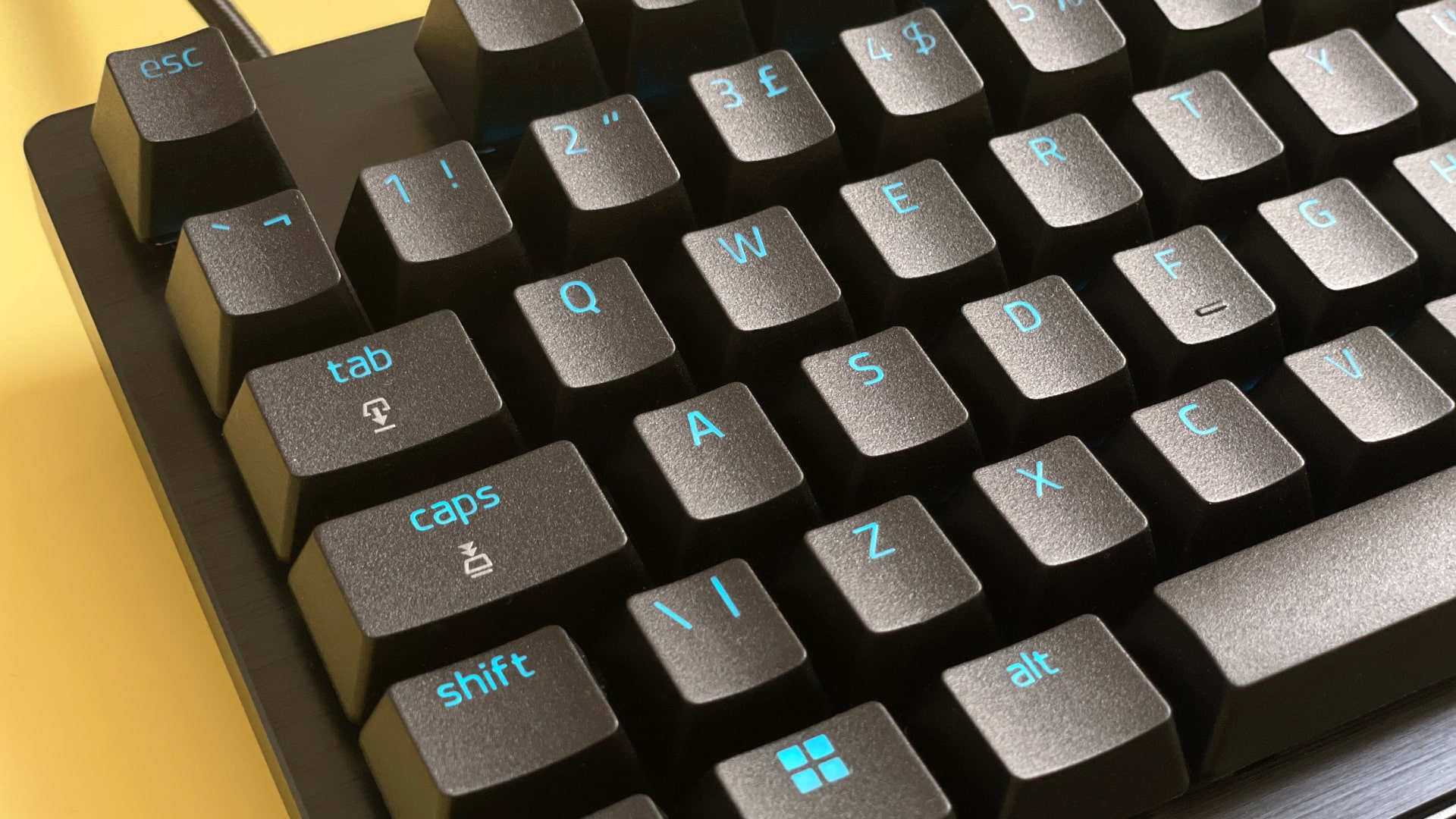iMore Verdict
A really solid keyboard with some excellent high-end gaming features and plenty of on-board customisation. it’s mostly just the price and lack of macOS support for the Synapse app that’s holding it back.
Pros
- +
Premium build quality
- +
High-end gaming features
- +
Lets you customise (most of) its features on the fly
Cons
- -
Only one switch option
- -
Razer Synapse isn’t compatible with macOS
- -
Expensive without Razer Synapse customisations
You can always trust iMore.
Mac gaming has been getting serious in recent years, with a slate of AAA games finally making their way to macOS. If you want a top-notch mechanical keyboard to blast your way through these titles, Razer’s new Huntsman V3 Pro Tenkeyless could be the answer.
With high-quality build materials and many customisable features (even including the ability to change how hard you press each key to activate it), this is a device for the most discerning of Mac gamers. But does its high price and lack of software support make it a questionable choice for Apple fans? Let’s find out.
Razer Huntsman V3 Pro Tenkeyless: Price and availability
The Razer Huntsman V3 Pro Tenkeyless costs $219.99/£219.99 and is available from Razer and third-party retailers.
Razer Huntsman V3 Pro Tenkeyless: What I love
The Razer Huntsman V3 Pro Tenkeyless is priced for the top end of the market, and you definitely get a premium-feeling product for your cash. The body is made from solid plastic with an aluminium top plate, and there’s no bending or flexing anywhere you look. There’s also a crisp LED display above the arrow keys that indicates the profile that’s in use, whether caps lock or game mode are enabled, and more.
Razer has opted for textured PBT keycaps with a slightly rough texture to them, and they feel great in use and will be resistant to shining over time. They’re also backlit, and the lighting is beautifully bright and clear, making the keyboard a cinch to use in a dark room.
Underneath the keycaps are Razer’s analogue optical switches. These are linear, meaning there’s no tactile feedback when you press each one, and they offer a very fast response – ideal for high-intensity gaming. Unlike some linear switches, they’re still pretty comfortable for long typing sessions (although more tactile switches are still better suited to this).
The tenkeyless form factor is more compact than a standard keyboard layout (it chops off the numpad), and it’s a good balance for both typing and gaming. In the top-right is a volume dial with built-in mute button, plus buttons for media controls and opening the Xbox Game Bar in Windows (in macOS this does nothing). As with almost every other key, these can all be remapped in the Razer Synapse app in Windows (but not in macOS).



As we’ll discuss in the next section, Razer’s Synapse app – which is used to customise many of the keyboard’s features – doesn’t work with macOS. But Razer has a solution of sorts, in that you can adjust key actuation, switch profiles, and enable and adjust the Rapid Trigger and Snap Tap features using keyboard shortcuts. This is a little clunkier than using the app, but it means that Mac users don’t miss out on these features entirely.
The ability to tweak key actuation levels – that is, how far you need to press a key for its input to be registered – is really useful, as it means you can make the keys feel as heavy or as light as you like (and they can be made incredibly light). To use this feature in macOS, you press the Function and Tab keys, then twist the volume dial or use the arrow keys. The LED display shows your chosen key actuation level (such as “1.2” for 1.2mm). You can also press a key to test your chosen actuation level, then press Esc or Function and Tab to save your changes directly to the keyboard (which means they’ll carry over to any Mac or PC you connect the keyboard to).
There’s a similar feature for Rapid Trigger mode, which lets you re-activate a key without fully letting go and allowing it to return to its unpressed position. You press Function and Caps Lock, then press Caps Lock again to highlight currently active Rapid Trigger keys. Spin the volume dial to adjust their sensitivity, or try tapping them to test them out – their backlighting goes green when the key is actuated and red when it’s reset.



Similarly, Snap Tap is enabled by pressing Function and Left Shift. This lets you press and hold one key, then tap another and both keys will alternate (e.g. hold A and tap B and the output will be ABABABAB). Unfortunately, without Synapse you can’t tell when it’s on or off except by testing it, as there’s no visual indication.
Finally, you can also switch profiles using just the keyboard. Press Function and one of the six keys in the top-right corner (Home, End, etc) – each one has a corresponding profile number printed on its keycap. The LED display’s profile icon will change colour when you change profiles. You can pick from one of five pre-made profiles, each with custom actuation levels, Rapid Trigger settings and more, and the profiles include ones for FPS games, racing titles, a high-sensitivity mode, and more.
Being able to customise things with just the keyboard takes a lot of the pain out of the lack of Synapse compatibility, and Razer’s implementation is very easy to use and understand. While we’d prefer to use Synapse, adjusting things on the keyboard itself means you don’t miss out on a lot of these excellent gaming features.
Razer Huntsman V3 Pro Tenkeyless: What I don’t love
Let’s talk about the elephant in the room: Razer Synapse. Razer’s companion app is used to customise all of its products, and the Huntsman V3 Pro Tenkeyless is no different. You use Synapse to change key actuation levels, enable features like Snap Tap and Rapid Trigger, tweak the lighting mode, and more.
The problem? Synapse doesn’t work with macOS. That means a sizeable range of features – many of which are core elements of the Huntsman V3 Pro Tenkeyless – are unavailable to Mac users. That includes enabling Continuous Rapid Trigger (but not the regular Rapid Trigger) mode, remapping keys, creating new profiles, setting macros and creating advanced lighting patterns. As we’ve seen, though, the good news is that many of the keyboard’s essential features can be enabled without requiring Synapse. Still, you might feel that the keyboard’s price is a little too high to justify without Synapse.



There are a few other issues of note. There’s only one switch option (linear) and the switches are not hot-swappable. The typing sound might displease mechanical keyboard purists, too – it’s loud, clunky and heavy. The palm rest is also very firm (some people will like this, while others might not). While it magnetically attaches to the keyboard along its top edge, it lacks clips holding it in place, so it can slide from side to side. Finally, there’s no way to enable the macOS keyboard layout, so certain keys (such as Command) are not where you expect them to be.
But none of these issues are as pressing as the lack of Synapse support in macOS. We’ve spoken to Razer about this repeatedly in the past and they’ve always assured us that macOS support is on their to-do list. We followed up again regarding the Huntsman V3 Pro Tenkeyless and received the same reply: future support is possible, but there’s nothing definite just yet. The sooner support arrives, the better.
Razer Huntsman V3 Pro Tenkeyless: Competition
The SteelSeries Apex Pro TKL is another tenkeyless mechanical keyboard built with customisable actuation and a rapid trigger function. Like the Razer Huntsman V3 Pro Tenkeyless, it comes with backlit PBT keycaps, an adjustable stand and an on-board display. It’s a little more affordable at $189.99/£189.99.
If the gamer aesthetic isn’t quite your thing but you still want many of the same features as Razer’s keyboard, the Keychron Q1 HE QMK is a much more subdued affair. You’ll still get a control dial and customisable actuation points, but in a more mature look. It also features hot-swappable switches with magnetic activation, a gasket mount design and a button to alternate between macOS and Windows layouts. It’s priced at $219/£193.
Razer Huntsman V3 Pro Tenkeyless: Should you buy it?
You should buy this if…
- You’re looking for premium touches in a keyboard
- You’re after professional-grade gaming features
- You want to quickly customise your keyboard without using software
You shouldn’t buy this if…
- You’re on a tight budget
- You prefer to set up your keyboard’s features using a companion app
- You want clicky, tactile mechanical key switches
Razer Huntsman V3 Pro Tenkeyless: Verdict
A really solid keyboard with some excellent high-end gaming features and plenty of on-board customisation. it’s mostly just the price and lack of macOS support for the Synapse app that’s holding it back.

Alex Blake has been messing around with Apple tech ever since he caved to the pressure and bought an iPhone 3G “just to see what all the fuss was about.” He’s spent the subsequent 15 years prattling on about Apple and has somehow managed to do so professionally. Don’t ask him how.

